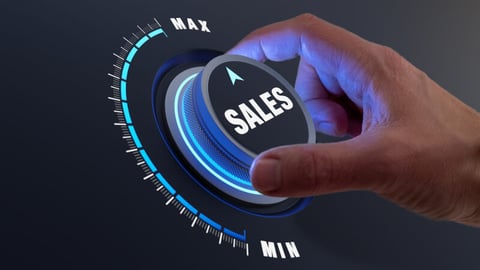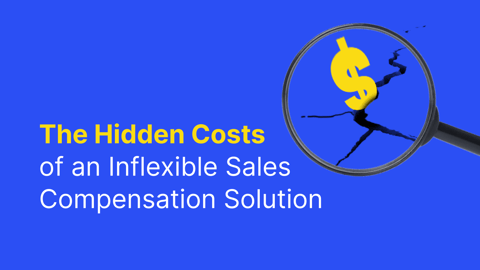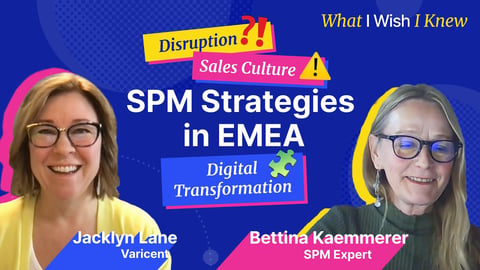It’s easy to think of sales success as a highly skilled and focused individual taking on the world and winning single-handedly. The reality – as any Sales Director will tell you – is that sales success is the result of a talented, hard-working group of people collaborating to get the results the business needs.
For many organizations, the team is made up of the account manager or business development rep, who is responsible for managing the overall sales campaign, and a pre-sales specialist whose role is to handle the more technical aspects of the sales campaign.
One area that has attracted significant focus and investment in recent years has been the Sales Development Representative (SDR). This role has emerged as many companies seek to optimize their go-to-market plan execution and sales force structure.
The role of SDRs is to develop marketing leads into sales opportunities. They’re considered a critical element of many go-to-market plans and often receive significant management focus. Part of this centers on the issues and challenges of designing the ideal SDR compensation plan and model.
From speaking with our customers, the challenge many sales managers face is how best to do this. You can’t simply drop a ‘standard’ sales commission plan into the SDR comp model and scale down the revenue targets or any other metrics you might use.
In this blog, we’ll explore the value of SDRs, how best to motivate them, and how technology can help you create an SDR compensation plan that works for everyone.
- The Value of Effective SDRs
- How Do You Best Motivate Your SDRs?
- Designing the Optimal SDR Incentive Compensation Model
- Building the Ideal SDR Compensation Platform
The Value of Effective SDRs
Back in the day, the sales process was relatively simple. In a less complex world, buyer needs were pretty straightforward and could be satisfied by well-established companies offering solutions to their problems. Sales leads often went straight to salespeople, who qualified them in or out based on a single phone call or meeting.
But the world has moved on. Innovation comes at break-neck speed in many areas. People now get their information from various sources online and can make a buying decision before a sales rep has even talked with them. Customer needs are complex, constantly changing, and rarely now of the ‘square peg, square hole’ variety.
This means that companies have to take a much more sophisticated approach to engaging with their customers based on how and when their prospects want to engage with them and how they make buying decisions. Prospects are happy to be educated but object to high-pressure sales tactics, especially where they have other options. They also carefully consider the companies they’re contemplating working with every bit as much as the product or service they’re considering buying.
There’s also a need to make the best use of limited resources, which means getting salespeople focused on opportunities that’ll close in 1 to 3 months rather than those that’ll close over a longer time frame.
Enter sales development representatives, whose role is to do much of the leg work of opportunity qualification before handing over qualified leads to a salesperson for closing.
So, what do SDRs do all day?
Let’s be clear: an SDR’s job isn’t to ask, ‘how many would you like?’. The conversation is much more likely to start with ‘what are you trying to achieve, and why?’. The conversation will be much more focused on understanding the business needs and building the personal relationships that are key to helping prospects through the sales process.
While an SDR isn’t expected to convert a lead into a sale, that SDR will be expected to put their company into the top 1 or 2 on a buyer’s list of possible solution providers and ideally in pole position. However, they’re responsible for handing over a well-qualified lead to sales so that the salesperson taking the lead is set up for success, hopefully in the shortest possible time.
While the role of the SDR and the salesperson will be different, what they both have in common is the need to have the resilience, determination, and motivation to deal with people saying ‘no’ to them constantly, or if they’re very lucky, a ‘maybe, but not yet.’
Like their counterpart on the sales team, SDRs need to understand the value of the products and services they’re promoting, how to overcome objections, what the competitive differentiators are, and the overall sales process. The difference is their focus is on the early stage of the sales process, so their role is to focus on education and passing on the correct information at the right time, whether it be whitepapers, eBooks, brochures, or invitations to events, webinars or product demos.
How Do You Best Motivate Your SDRs?
Given the significant value that SDRs offer their employers, many senior managers are now lavishing the same care and attention on managing and motivating their SDRs as they do with their other salespeople.
SDRs rightly see themselves as ‘salespeople,’ albeit with a different area of focus than their colleagues in the ‘regular’ sales team. Some aspects of a company’s sales compensation model can be applied to SDRs, whether a competitive base salary, bonus payments, one-off promotional events, professional development, or team-based incentives.
However, there are some significant differences in the day-to-day life of an SDR. This has implications for designing the optimal SDR compensation incentive plan.
Let’s explore some of them.
1. Volume
Depending on the sales situation, a salesperson can only reasonably be expected to manage 6-10 live opportunities at once. However, SDRs will have significantly more opportunities than this at various stages of development, perhaps 60-100. This large volume of leads, and the marketing investment needed to secure them, means that there’s a premium on having a relentless focus on developing them.
Every engagement with prospects has to be high quality, which means keeping SDRs focused to keep them engaged and fresh. SDR team managers may want to think about a motivational program that keeps the working environment fresh and vibrant to keep their SDRs constantly at the top of their game, whether through team competitions, daily bonuses, or social events.
2. SDRs Don’t Close Deals
For regular salespeople, closing business and earning commission is part of the attraction of working in a sales environment, despite all the pressures involved.
However, this isn’t an option for SDRs – their role is to develop opportunities ready for closing by others. SDR team managers need some measurable, objective metrics and KPIs that highlight and reward effort, commitment, and success achieved by SDRs.
This might be the number of meetings arranged, demos organized, or the number of qualified leads passed over to the regular sales team – provided there’s some quality threshold.
Like setting a sales target, getting these numbers ‘right’ is important. If you set the number of leads passed over or meetings arranged too high, you might be setting up SDRs to fail, which is counterproductive. Equally, setting the bar too low doesn’t help the business either. Getting the right balance needs thought, data and insight.
3. SDRs Want Career Progression
SDRs typically take up the role as their first or second job to move into regular – and high-paying – sales roles when they’ve got a few years under their belt. This approach works for employers, too – they see their SDR teams as rich recruitment pools for salespeople.
There’s ample scope in an SDR compensation plan to include career development opportunities, whether it’s dedicated sales development programs, ongoing coaching, presentation training, or shadowing opportunities with experienced sales reps.
Let’s explore how to develop the ideal SDR compensation model.
Designing the Optimal SDR Incentive Compensation Model
When designing any compensation model – for salespeople, sales managers, or SDRs – there’s a great temptation to use what has worked in the past.
However, having worked with a range of customers, the number one reason incentive compensation management models fail to achieve their objectives is that the compensation plans for salespeople and SDRs end up being misaligned with the needs of the business. Either targets are unrealistically high and people leave, or they’re too generous and cost the company a fortune. Senior managers and HR teams must find a model that strikes the right balance.
Given that markets, customers, and companies change constantly, it might be best to nearly start from scratch every year and design a model that utilizes data and experience to create the optimal incentive plan.
How Do You Build the Ideal Incentive Model?
The smart move would be to base the ideal remuneration model on the behavior of your most successful SDRs. So how do you find that out?
Revenue intelligence capabilities allow you to review all the sales and marketing data in your business to determine the most effective SDR behaviors. For example, find the optimal number of sales contacts you need to convert a lead into an opportunity. Do you work with the person who contacted you, or should you broaden your contact base at the prospect's earliest opportunity? Are prospects that attend events of better quality than those that attend your webinars? How effective are demos, and where do they fit most effectively in the SDR lead development process? What’s the optimal period for a lead to sit in the SDR ‘sales funnel’? The answer to these vital questions, and others, will be found in your sales and marketing data.
You can use these metrics to design the ideal incentive model for your SDRs as you can with your regular salespeople. From the same data source, you can also understand the realistic number of opportunities an SDR can handle through the sales year and the number of leads a business needs to grow as planned. You can even use the data to understand the size of your addressable market and decide whether you need to invest further in your sales and marketing effort to maximize your growth.
The same can be said for the short-term incentives that help keep SDRs focused and engaged, even though they may in an office all day with limited opportunity to engage with clients. Again, let data be your guide. Find out which incentives work best. Did that sales trip to the 5 Star resort work better than cash bonuses? Do team incentives work better, or should you focus on schemes for individuals?
Another smart move is to recognize that as the business changes and as customer buying behaviors change, the behavior of your best SDRs will likely change too. The trick is to be one step ahead and monitor your data to see the changes – whether for good or bad – and tweak the short-term incentives and annual SDR compensation plan to address them.
How do you develop this type of solution?
Building the Ideal SDR Compensation Platform
Data analytics lies at the core of designing the ideal SDR incentive compensation model. It helps you understand and analyze the variables that define an SDR's effectiveness.
The first step is to capture the data that helps bring clarity to the situation. This will sit in a range of applications in the business, so that customer, marketing, and sales information can be consolidated and analyzed using powerful AI capabilities and human expertise.
This analysis can capture a range of trends relevant to SDRs so that a company can create territory models, SDR KPI models, and incentive plans that meet the needs of the business. For example, you can see how many meetings or demos an SDR needs to arrange to ensure they have enough quality leads handed over. You can see how many touchpoints or contacts they typically need to convert a lead. You can even create propensity models so that SDRs focused on a sector more likely to convert has a different target compared with a different sector with a different propensity to buy from you. You can also see the size of a business's sales funnel and ensure that the marketing function creates a sufficient number of leads to feed it at the rate the business needs to grow.
These capabilities allow managers to review and collaborate with various options and ideas that’ll enable them to create the SDR compensation plan using ‘what if’ scenario planning.
Learn more about creating the ideal SDR plan in our eBook: The Complete Guide to Sales Planning.



